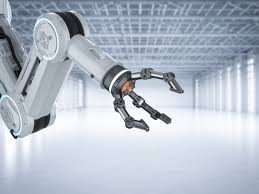End effectors, also known as end-of-arm tooling (EOAT), are the devices attached to the robot’s wrist that enable it to perform specific tasks. These tools, which can be mechanical or electromechanical, allow robots to grip objects, execute processes, or gather data using sensors. They range from basic two-fingered grippers used in pick-and-place operations to advanced sensor arrays for detailed inspections.
The global market for robot end effectors is projected to surpass $5 billion by 2027, highlighting the rapid growth and importance of these components in the automation industry.
Understanding End Effectors
End effectors come in a variety of forms, including robotic grippers, tool changers, collision sensors, rotary connectors, pressure devices, compliance systems, burr cleaning tools, and arc welding torches. They are widely used in applications such as handling, assembly, welding, dispensing, painting, and cutting across diverse sectors like automotive, electronics, food and beverage, metals and machinery, chemicals, and healthcare.
Categories of End Effectors
Industry experts generally classify end effectors into three primary types:
- Grippers:
The most frequently used type, grippers, are essential for picking up and moving objects. They are especially useful in tasks like assembly, machine tending, and pick-and-place operations. Grippers come in many varieties including those with multiple fingers (commonly 2 to 5, though configurations with 6 or more exist), as well as vacuum, magnetic, and needle grippers. - Process Tools:
This category includes a wide range of tools designed for specific manufacturing operations. Examples include welding torches, machining devices, painting systems, and even 3D printing heads. Essentially, if a process can be performed with a handheld or automated tool, there is likely a robotic counterpart available. - Sensors:
End effectors can also serve as advanced sensing devices, transforming robots into powerful inspection tools. Sensors such as ultrasonic detectors, laser scanners, 2D and 3D cameras, and infrared devices help streamline data collection and reduce manual inspection efforts. Additionally, many robotic systems incorporate tool changers that allow them to switch between different end effectors autonomously, enhancing their versatility on the production floor.





